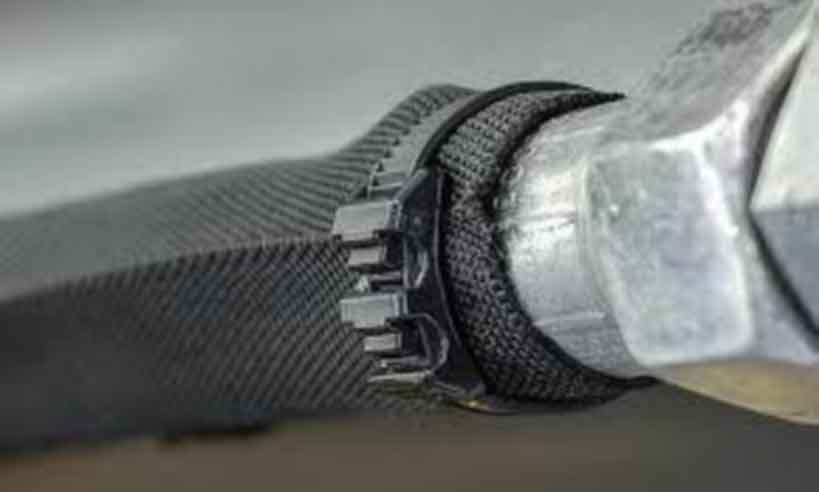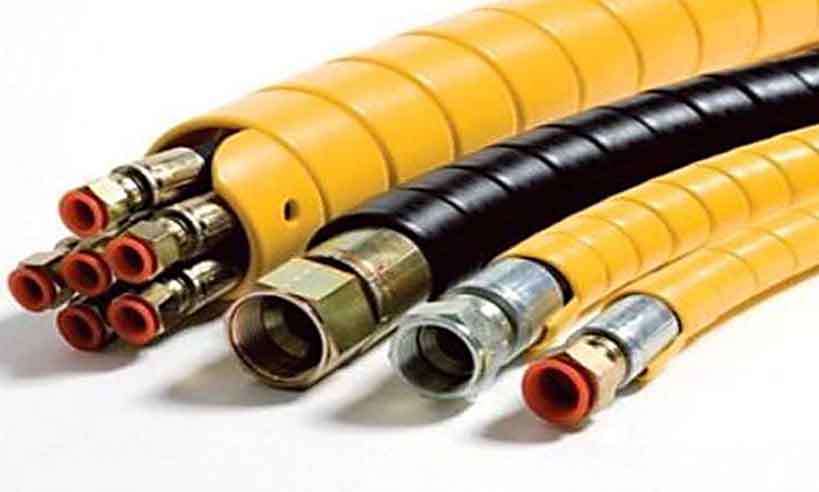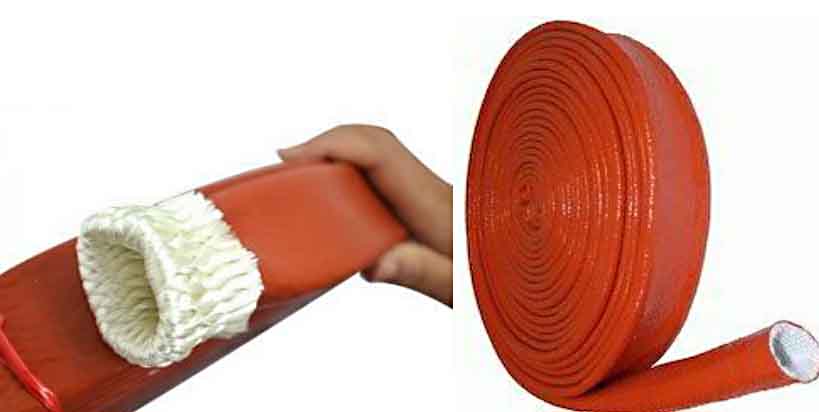Hydraulic hose assemblies rarely operate in controlled, protected environments. Rather, rough and demanding conditions are the norm. Thus, hose is often exposed to flying debris in mobile equipment and the likes of weld spatter and hot metal chips—or even the errant lift truck—in industrial settings.
Add to that, hoses subjected to continuous movement and machine vibration can rub against each other and adjacent equipment. That can erode hose covers, expose the reinforcement to dirt and moisture, and lead to quick failure.
Thus, it’s essential to protect hydraulic hose against abrasion, physical impact, crushing loads and high temperatures to ensure long, reliable operation. Here are some common ways to safeguard hose.
Shielding. Perhaps the best way to keep hose safe is to create a physical barrier against harm. Something as simple as a sheet-metal guard can protect vulnerable sections against impacts, sparks, weld spatter and intense heat near furnaces and foundry equipment.
Often times, however, space limitations, cost or convenience means shielding isn’t suitable for an application. Fortunately, many manufacturers offer add-on hose-protection products such as sleeves and wraps that are simple, effective, and can protect against cuts, abrasions and UV radiation and, in some cases, even resist crushing. Here are several other options to consider.
Spring guards. Spring guards, as the name implies, are wound steel springs typically zinc-plated for corrosion resistance. They come in various diameters slightly larger than the hose OD. They install by simply sliding over the hose and are available in standard lengths or in bulk coils that can be cut to fit.
Steel-spring hose guards support hydraulic hoses and help prevent damage. They’re commonly used on construction equipment but are suitable for any application that needs protection against abrasion, cuts, deep gouges, impact, and accidental compression.
Protective sleeving. Protective sleeves are textile tubes that slide over a hose.
They’re made of materials like woven nylon or polyester and provide excellent resistance to external abrasion and UV radiation. The construction often offers a smooth interior wall that lets hose move freely inside the sleeve and prevent internal abrasion.
Some products are rated for MSHA flame resistance. Others, made of materials like polyamide, are reinforced and protect workers and machinery against hydraulic hose bursts and pinhole leaks. Sleeves are also an effective way to bundle together similarly rated high- or low-pressure hoses that bend and flex in the same direction. Hose sleeves can also improve aesthetics, as they provide a more-streamlined look to hydraulic hose on machinery.

Protective wrap. This product is much like a protective sleeve, but is designed to affix after assemblies are already installed. The abrasion-resistant fabric material comes flat and includes a Velcro-type closure to easily wrap around and fasten over the hose or bundle several hoses together.
Plastic spiral guards. Flat, spiral-shaped plastic guards wrap around a hose and, depending on the application, can be secured without removing an assembly from a machine. They’re made of materials such as heavy-duty polyethylene and have a flat profile with rounded edges to prevent damage to the hose. Plastic spiral guard offers a light and economical way to protect hoses from abrasion, cuts, impact and crushing loads, as well as UV attack. Like sleeves and wraps, the plastic guard is relatively easy to install and it can bundle together several hose lines.

Fire sleeve. A number of companies offer heat and flame-resistant hose protection products. Several manufacturers term it “fire sleeve.” This is a tough, flexible insulating cover that slides over a hose and clamps to the fittings. It is typically made of woven fiberglass or materials like high-temperature silicone.
It protects hydraulic hoses and pneumatic tubing against extreme radiant heat, sparks, weld spatter, molten metal and glass splash, as well as open flames. While exact ratings depend on the specific manufacturer and construction, they are generally approved for continuous exposure at temperatures of about 500° F, exposure for around 15 to 20 minutes at temperatures to 2000° F, and brief excursion as high as 3000° F.


